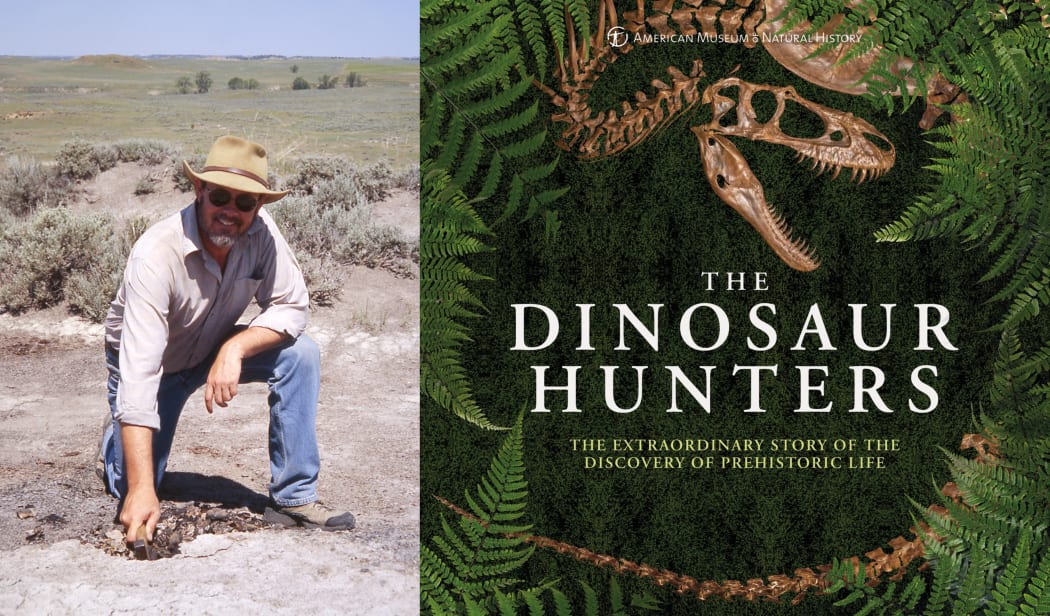The word "dinosaur" has only been around for a couple of hundred years, but people have been finding the fossilised remains of prehistoric animals for more than a thousand years.
Dr Lowell Dingus' book The Dinosaur Hunters tells the stories of the people who have dedicated their lives to uncovering the bones of these ancient reptiles.
The Chinese and ancient Greeks were early pioneers in the field, Dingus says.

Photo: Supplied
"The Chinese were at the forefront in terms of recognising that these were bones from, apparently animals and they kind of incorporated into the mythology of dragons and so forth."
The Greeks pondered why seashells could be found in the mountains.
"It led to some insights about how the sea level has changed over time.
"And that kind of set a foundation for studying fossils in a more scientific and less mythological framework."
The first ever dinosaur bone to be scientifically described was misidentified, he says.
"It was in 1677 and an Oxford chemistry professor Robert Plot found the end of a thigh bone, a big end of the thigh bone, and he was puzzling over this and ended up thinking that it might have been one of the thigh bones from an elephant that the Romans had brought to England."
Later the find was thought to be from a giant human.
"Another scientist actually described it as scrotum humana, which is basically a human scrotum."
Our knowledge of dinosaurs took a big leap with the discovery of the iguanodon in 1821, Dingus says.
A country physician named Gideon Mantell, an amateur collector, found some fossilised teeth.
"He was trying to figure out how these came to be, what they might be and there happened to be a visiting scientist there who studied iguanas in London, and they hooked up and realised that some of the teeth that Mantell was finding looked a lot like teeth from the iguanas just in terms of their shape, not their size.
"And so, in the end, once this animal was described by Mantell, it was called iguanodon and iguanodon is still recognised as a legitimate genus of dinosaur."
The late nineteenth century saw an explosion of interest in dinosaurs in both Great Britian and the USA.
Two prominent paleontologists in the US engaged in what became known as the Bone Wars.
"One was O C Marsh, who was professor of paleontology up at Yale, and the other was Edward Drinker Cope, who usually is affiliated with the Philadelphia Academy of Sciences."
The two men were friend initially, he says.
"But soon they were at one another's throats because they were trying to get the best fossils not only back in the east coast in New Jersey, and so forth.
"But also the American West had started to open up by the 1870s to the late 1870s. And some of the prospectors especially and workers were rail workers, and so forth, we're finding fossil bones.
"So, they got into a very heated competition for finding the best bone sites and trying to outdo one another, especially in terms of getting what they found out West into print, because the first person who describes and publishes a name for a particular kind of dinosaur gets the credit for discovering it."
US paleontologist Banham Brown personified the golden age of discovery in the late 19th century, he says.
"He was the first one that really discovered any significant portion of a skeleton of Tyrannosaurus Rex and this in north central Montana in 1902."
In the 1970s our understanding of dinosaurs became far more nuanced, he says.
"Rather than being slow, dim-witted, cold-blooded animals like snakes and lizards and crocodiles and alligators that dinosaurs were actually much more active and mobile, and perhaps even more colorful than the greens and grays that artists had portrayed them as in earlier decades of the 20th century."

